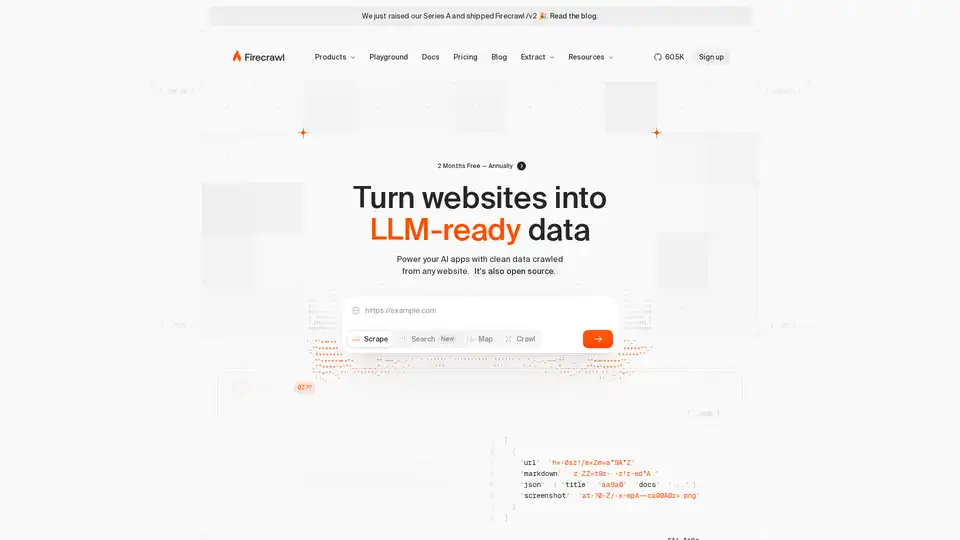
Firecrawl
Overview of Firecrawl
What is Firecrawl?
Firecrawl stands out as a revolutionary web data API tailored specifically for AI developers and builders. In a world where AI agents and large language models (LLMs) crave fresh, structured data from the vast internet, Firecrawl simplifies the process of web crawling, scraping, and searching. Launched with backing from Y Combinator and trusted by over 5,000 companies, this tool transforms raw websites into clean, markdown-formatted, JSON-structured, or even screenshot-ready outputs that are immediately usable for AI reasoning and applications. Whether you're enhancing AI chats with real-time web context or enriching lead data for sales teams, Firecrawl eliminates the traditional headaches of web scraping, like proxy management or JavaScript rendering issues.
At its core, Firecrawl is both an open-source library and a hosted API service, making it accessible for solo developers to enterprise-scale projects. Its recent Series A funding and the release of version 2 underscore its rapid growth and commitment to innovation in AI data pipelines.
How Does Firecrawl Work?
Firecrawl operates on a set of core principles designed to outperform conventional scrapers. Unlike tools like Puppeteer or cURL that struggle with modern, dynamic websites, Firecrawl covers 96% of the web—including JavaScript-heavy pages and protected content—without relying on proxies or headless browsers. This "no proxy headaches" approach ensures reliability and speed, delivering results in under 1 second for most requests, ideal for real-time AI agents.
The workflow is straightforward:
- Input a URL or Query: Start with a single URL for scraping, a site domain for crawling, or a search query for web-wide exploration.
- Intelligent Processing: Firecrawl uses smart waiting mechanisms to load dynamic content, handles media parsing for PDFs and DOCX files, and employs stealth mode to mimic real user behavior, avoiding blocks and CAPTCHAs.
- Output Structured Data: Receive LLM-ready formats like clean markdown (free of ads and navigation clutter), JSON with extracted metadata, or screenshots. For crawling, it maps entire sites, respecting robots.txt while extracting data from all accessible pages.
- Integration Ease: With SDKs for Python, Node.js, and even curl commands, integration is developer-friendly. For example, a simple Python script can scrape a site like firecrawl.dev in seconds.
This efficiency stems from its ground-up architecture, which prioritizes speed and cleanliness. Benchmarks show Firecrawl completing tasks in 49-52 ms, far surpassing competitors, making it perfect for dynamic apps that need instant web insights.
Key Features of Firecrawl
Firecrawl packs a suite of features that make it a go-to for AI data extraction:
- Scrape: Extract full content from any URL in multiple formats. Get markdown stripped of boilerplate, JSON schemas for structured data (e.g., titles, docs), and even screenshots for visual verification.
- Crawl: Automatically discover and scrape all pages on a website, building a comprehensive index without manual sitemaps. It's selective caching allows you to control storage and freshness.
- Search (New): Perform web searches and retrieve complete, contextual content from results, powering semantic searches or knowledge bases.
- Map: Visualize site structures for better navigation in large crawls.
- Actions for Interactive Scraping: Simulate user interactions like clicking, scrolling, typing, or waiting—crucial for single-page applications (SPAs).
- Media and Document Parsing: Handle PDFs, DOCX, and other files hosted on the web, outputting parsed text ready for AI processing.
- Zero Configuration: No need to manage rotating proxies, rate limits, or orchestration—Firecrawl handles it all behind the scenes.
- Open-Source Transparency: The core library is publicly available on GitHub with 60.5K stars, allowing community contributions and custom tweaks.
These features ensure data cleanliness: Firecrawl intelligently removes noise, enforces ethical scraping by respecting robots.txt, and scales for large projects without failing on edge cases like authentication or CAPTCHAs (though advanced setups may require custom handling).
Primary Use Cases for Firecrawl
Firecrawl shines in scenarios where AI needs high-quality web data. Here's how it's transforming industries:
- Smarter AI Chats with Context: Integrate real-time web data into chatbots or assistants. For instance, power an AI like Claude or Cursor with up-to-date info, ensuring responses are accurate and current. Developers report 50x faster performance compared to alternatives like Apify.
- Lead Enrichment and Sales Intelligence: Scrape directories to enrich CRM data with contact info, funding stages, and decision-maker details. Sales teams use it to "know your leads" by pulling structured insights from company sites.
- Deep Research and Knowledge Extraction: For academic or market research, crawl sites for papers, news, expert opinions, and industry data. Build custom search tools that deliver comprehensive, non-missed insights.
- AI Platforms and Agent Building: Let users create apps with web data via integrations like Mendable.ai or code editors (Claude Code, Cursor, Windsurf). It's ideal for platforms where customers build AI workflows.
- SEO and Content Optimization: Extract web data for keyword analysis or competitor research, feeding into AI-driven SEO tools.
Real-world examples include startups using Firecrawl for funding round tracking or e-commerce sites scraping product info for pricing intelligence.
Why Choose Firecrawl Over Other Scrapers?
In a crowded market, Firecrawl differentiates through performance and ease. Traditional scrapers often fail on JS-rendered pages or require complex setups, but Firecrawl's 96% coverage and sub-second speeds make it reliable for AI pipelines. It's SOC 2 Type 2 compliant for security, offers free tiers with no credit card required, and scales seamlessly—credits for scraping and crawling are cost-effective, with pay-per-use options.
User testimonials highlight its impact: Morgan Linton calls it "mind-blowing" for AI coding, while Alex Reibman switched from Apify for 50x speed gains. Chris DeWeese wishes he'd discovered it sooner, and the community praises its responsive development, like adding TypeScript support in under an hour.
Pricing starts free (2 months on annual plans), with plans scaling by credits—scraping costs minimal per request, and failed ones aren't charged. No rollover, but flexible monthly billing via standard methods.
Who is Firecrawl For?
Firecrawl targets AI builders, developers, and data scientists who need web data without the hassle. It's perfect for:
- Solo Developers and Startups: Quick integration via SDKs for prototypes.
- AI/ML Engineers: Feeding LLMs with clean datasets for training or inference.
- Product Teams: Building features like research tools or lead gen apps.
- Enterprises: Large-scale crawling with compliance and reliability.
If you're tired of brittle scrapers, Firecrawl's open-source ethos and proven benchmarks make it the best way to harness web data for AI innovation.
Getting Started with Firecrawl
Sign up for free at firecrawl.dev—no credit card needed. Grab your API key from the dashboard, install the SDK (e.g., pip install firecrawl-py), and run a simple scrape:
from firecrawl import Firecrawl
app = Firecrawl(api_key="fc-YOUR_API_KEY")
result = app.scrape_url('https://example.com')
print(result['markdown'])
Explore docs for advanced features like caching patterns or action chains. Join the Discord or GitHub community for support, and check the blog for updates like the v2 release.
In summary, Firecrawl isn't just a scraper—it's the bridge delivering the internet to AI, enabling smarter, faster applications with minimal effort. Whether for research, enrichment, or agentic workflows, it's the tool that makes web data accessible and actionable.
Best Alternative Tools to "Firecrawl"
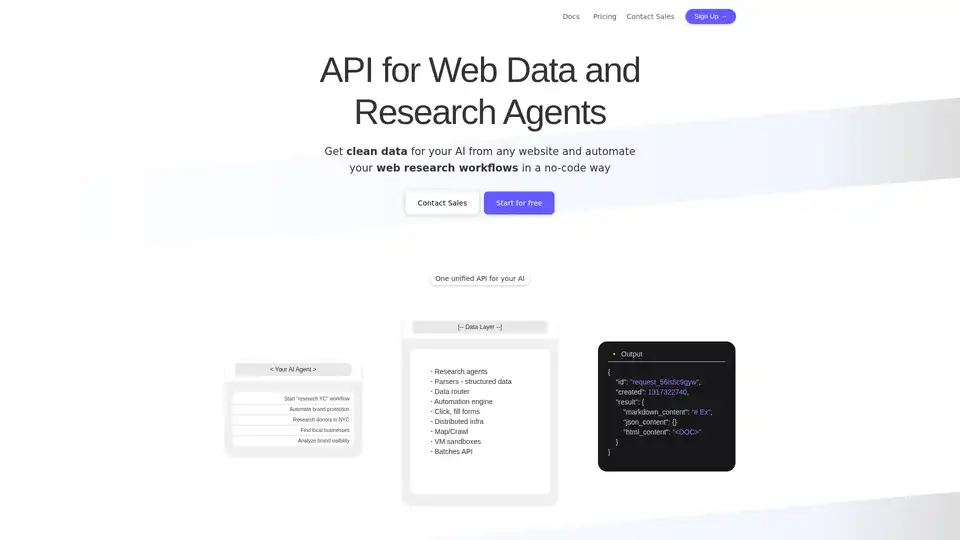
Olostep is a web data API for AI and research agents. It allows you to extract structured web data from any website in real-time and automate your web research workflows. Use cases include data for AI, spreadsheet enrichment, lead generation, and more.
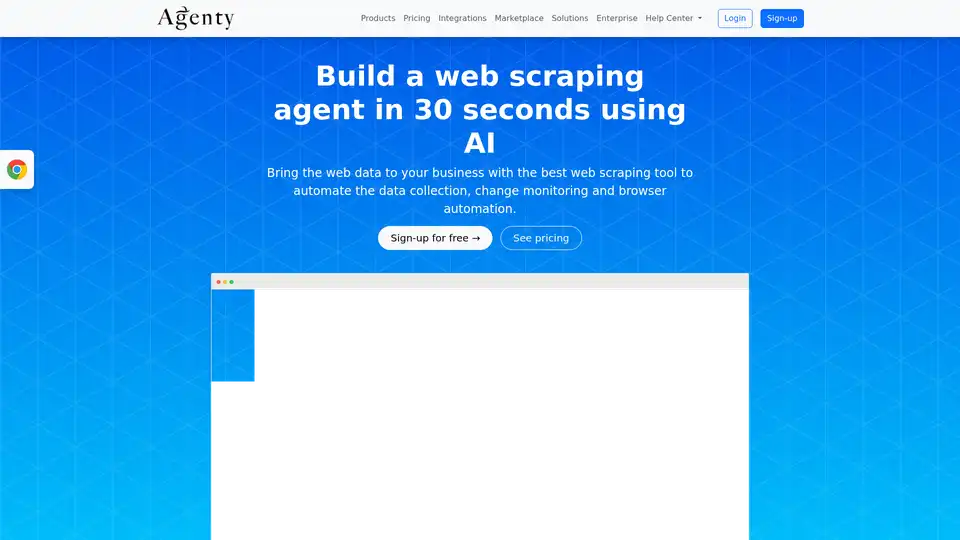
Agenty® is a no-code web scraping software that automates data collection, change monitoring, and browser automation. Extract valuable information from websites with AI, enhancing research and gaining insights.
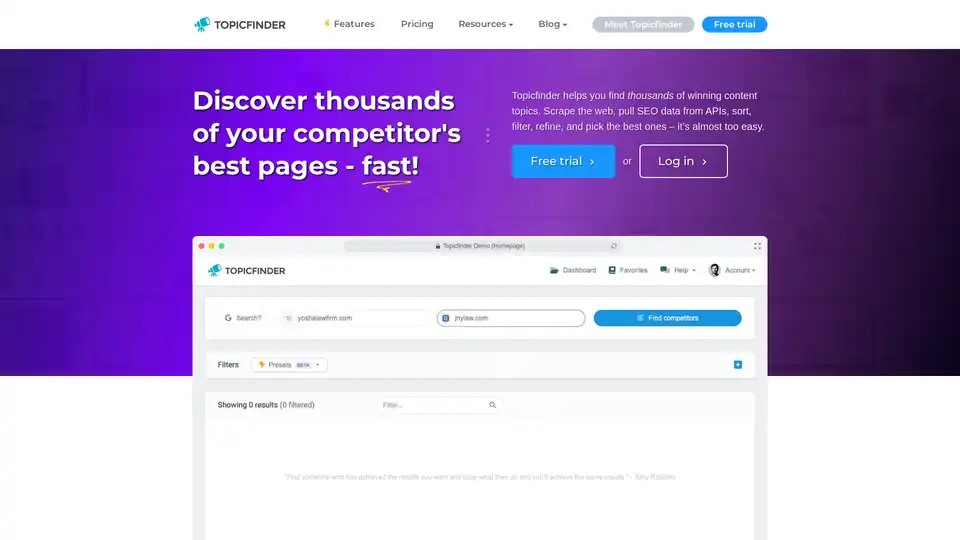
Topicfinder is an AI-powered competitive research tool that finds thousands of high-value content topics in minutes with SEO metrics, filtering, and AI-generated optimized titles.
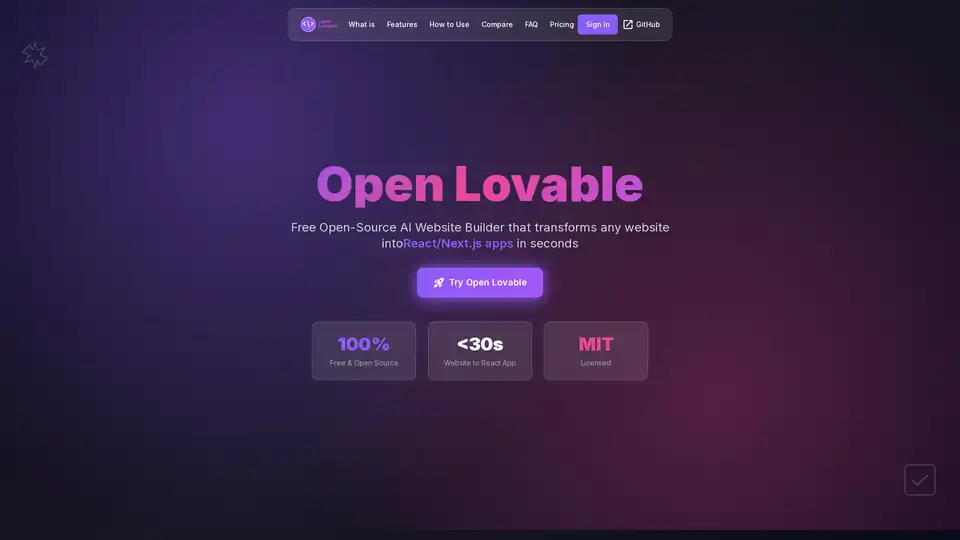
Open Lovable is a free open-source AI tool that transforms any website into React/Next.js apps in seconds. Clone websites, generate clean code, and maintain full ownership. The best Lovable.ai alternative for developers.
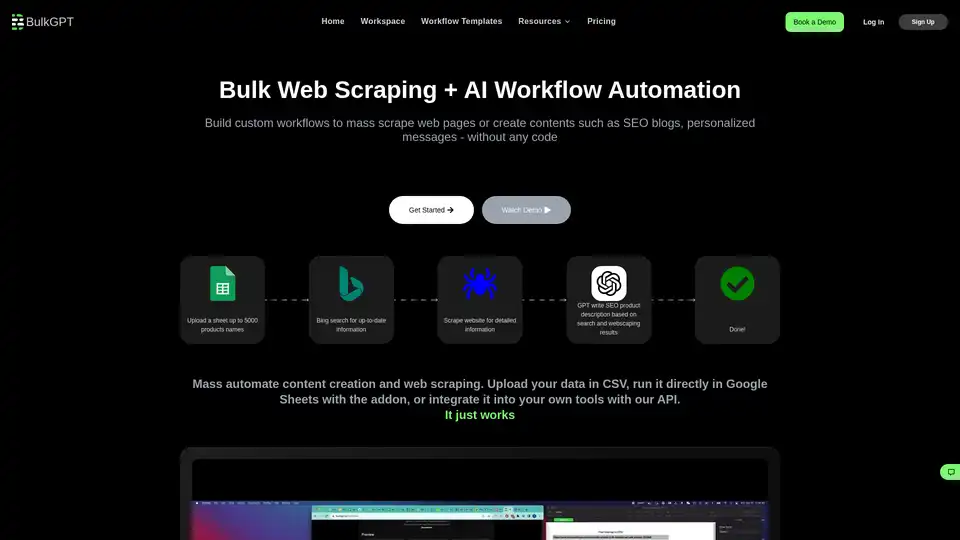
BulkGPT is a no-code tool for bulk AI workflow automation, enabling fast web scraping and ChatGPT batch processing to create SEO content, product descriptions, and marketing materials effortlessly.
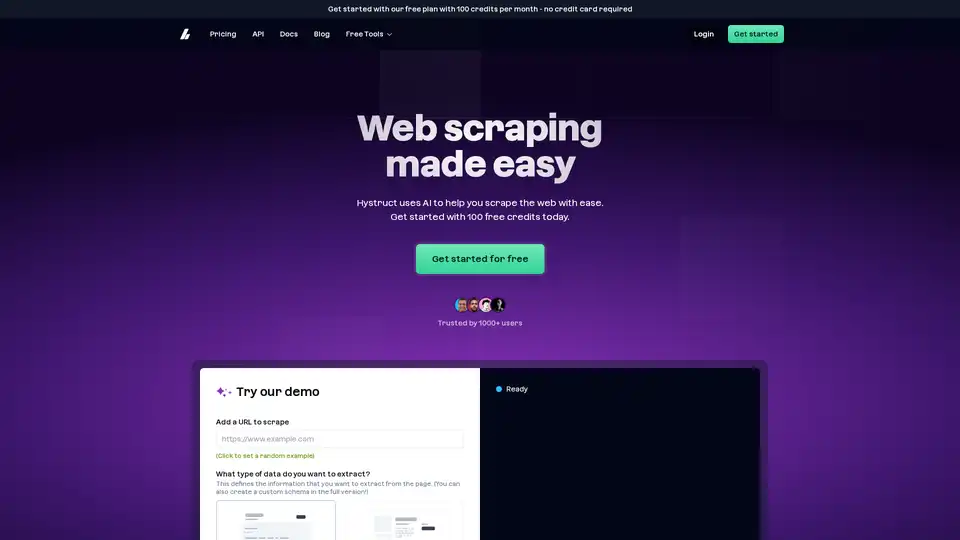
Hystruct AI simplifies web scraping with AI-powered automation, offering structured data extraction for job posts, ecommerce products, and custom schemas. Start with 100 free credits monthly.
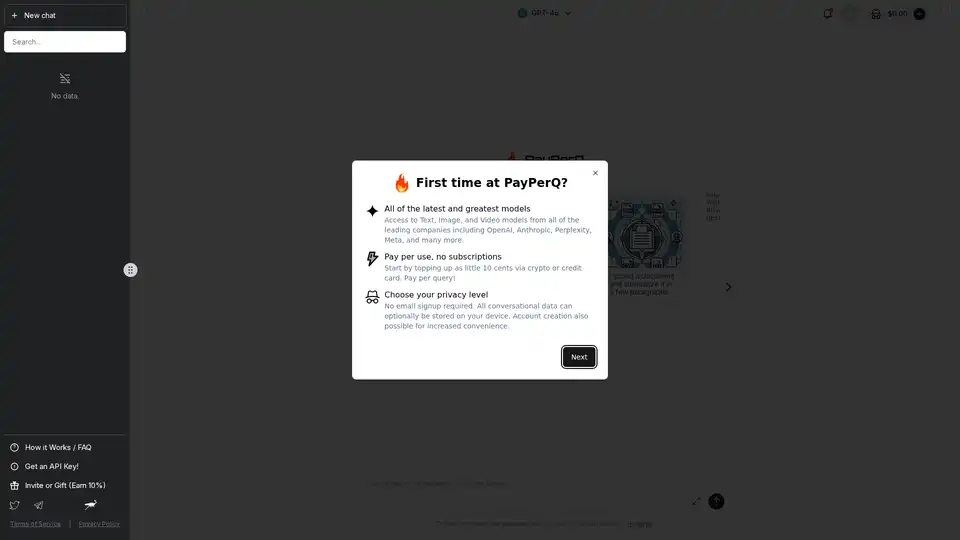
PayPerQ (PPQ.AI) offers instant access to leading AI models like GPT-4o using Bitcoin and crypto. Pay per query with no subscriptions or registration required, supporting text, image, and video generation.
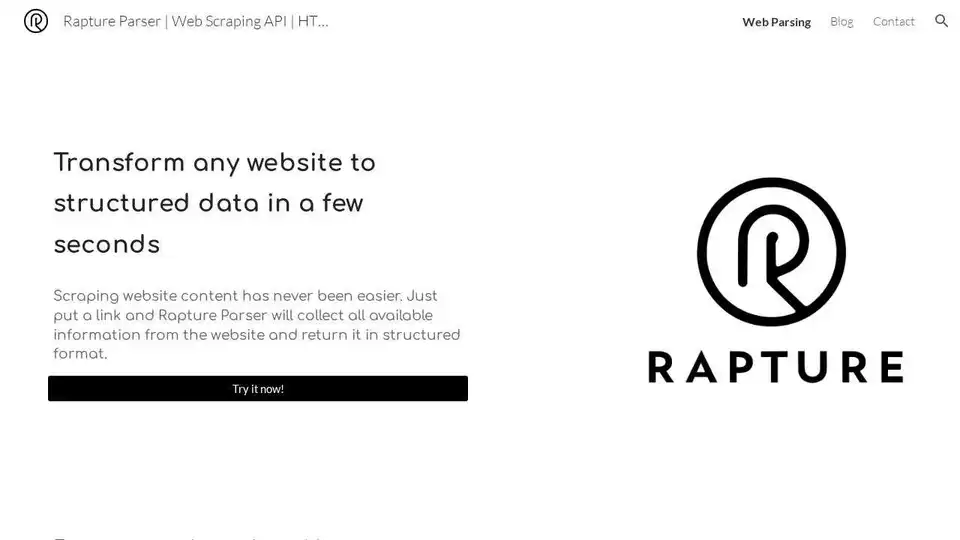
Rapture Parser: An AI-powered web scraping API that transforms websites into structured data. Extract text, metadata, and bypass anti-scraping measures effortlessly.
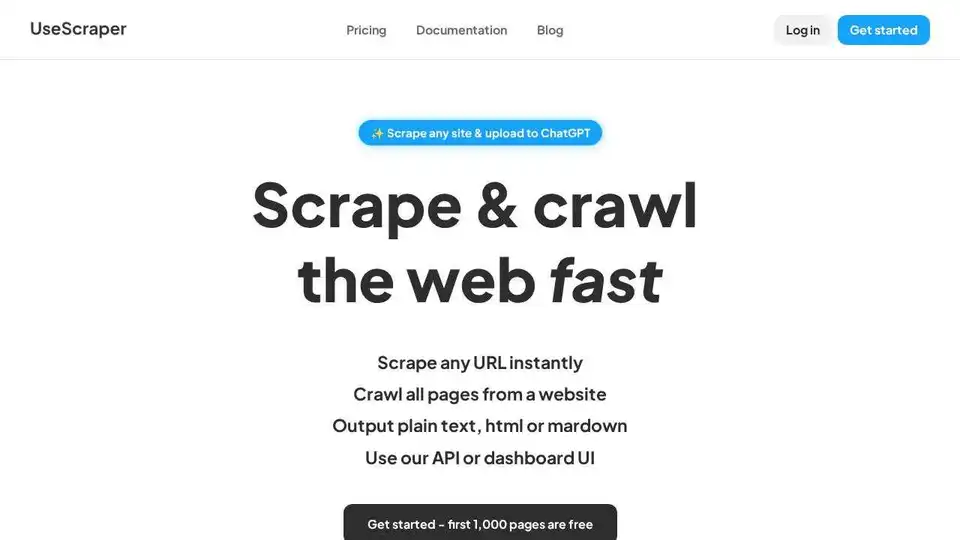
UseScraper is a hyper-fast web scraping and crawling API. Scrape any URL instantly, crawl entire websites, and output data in plain text, HTML, or Markdown. First 1,000 pages are free.
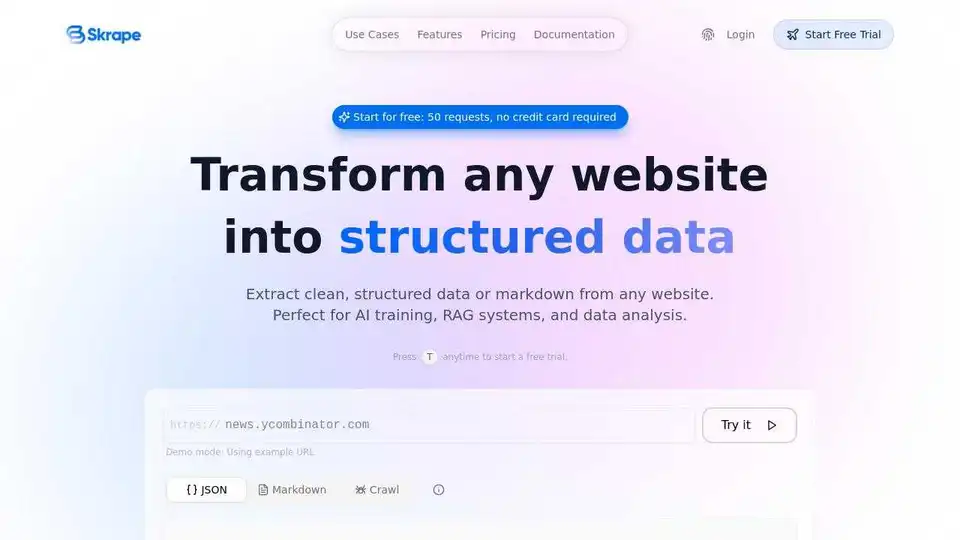
Transform any website into clean, structured data with Skrape.ai. AI-powered API extracts data in preferred format for AI training.
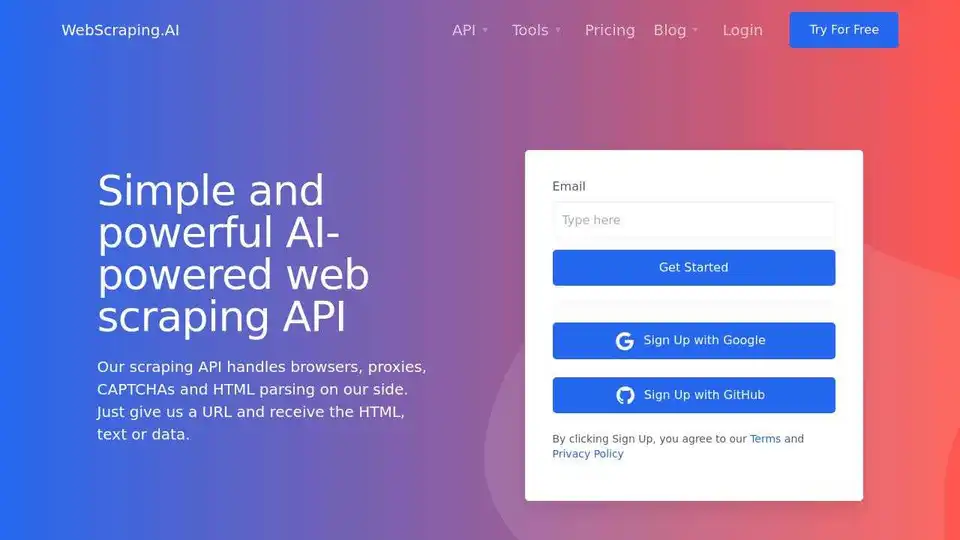
WebScraping.AI is an AI-powered scraping API that handles proxies, browsers, and HTML parsing for easy web scraping.
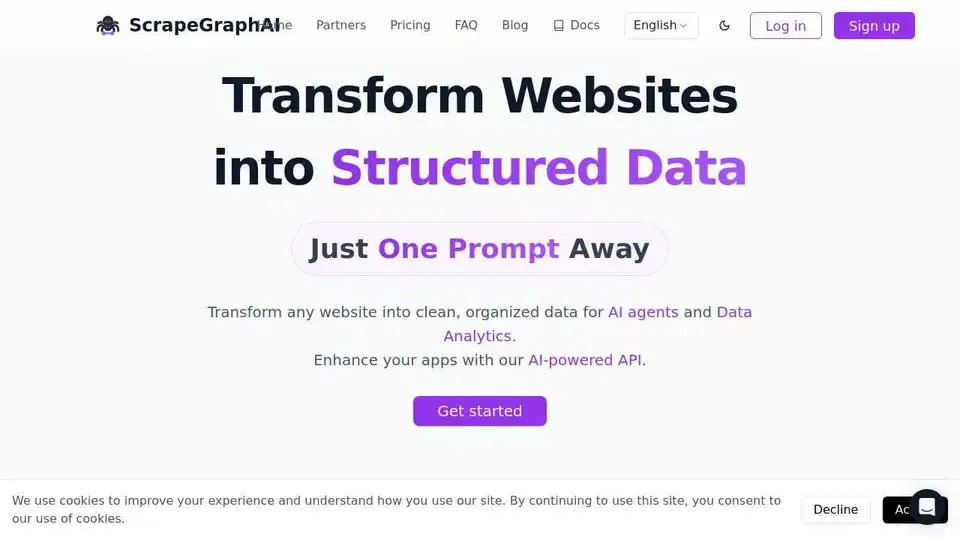
ScrapeGraphAI: Extract structured data from any website using our powerful LLM-driven web scraping API. Perfect for developers and data scientists.
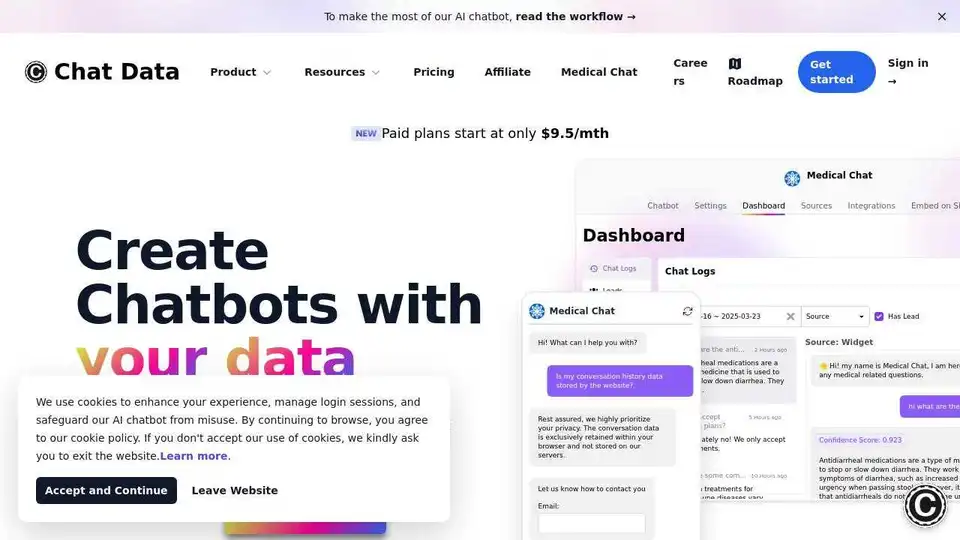
Chat Data is an AI chatbot creation tool for websites, Discord, Slack, Shopify, WordPress, & more. Train once, deploy everywhere. Customize, connect, & share.
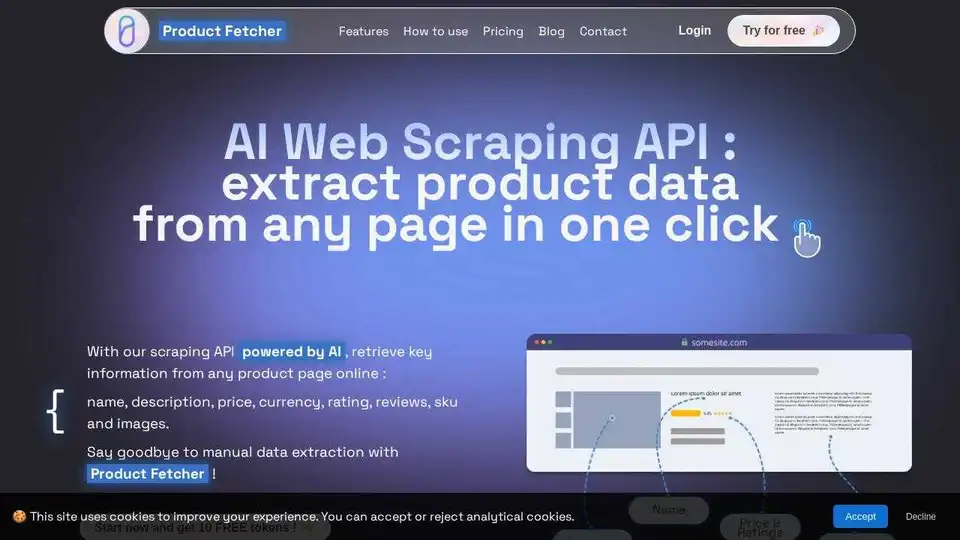
Automate product data extraction with Product Fetcher, an AI-powered API. Scrape prices, reviews, and SKUs from any website with no coding, IP bans, or CAPTCHAS. Start for free!
